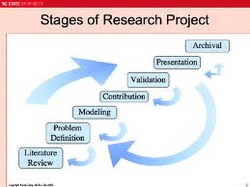 Child development research suggests that schools, along with the family and peer group, are one of the most influential social contexts for children’s development. In the United States, poor educational attainment is a major cause of poverty, and poverty is a key influence on academic failure, therefore it should not be surprising that poverty tends to be chronic, or that poor achievement has massive costs to individuals and society (Arnold & Doctoroff, 2003). Numerous factors contribute to the relation between SES and educational outcomes, including birth weight; nutrition, housing quality, and access to health care (Bradley & Corwyn 2002). Unfortunately, while children living in poverty will likely require extra educational resources to counteract their poverty, schools serving low-SES children receive much lower public funding than schools serving higher-SES children (Arnold & Doctoroff, 2003). Furthermore, during the past decade the American public has been exposed to an intense debate relating to the real and perceived inadequacies of public education and in particular, the improvement of reading instruction in our schools (Taylor, Pearson, Peterson, & Rodriguez, 2005).
In 2001, the No Child Left Behind Act was enacted to increase accountability and performance standards for public schools, and it was anticipated that this new legislation would close the achievement gaps and ensure that all students, regardless of any existing disadvantage could make significant achievement gains in schools. Unfortunately, with the exception of research on class size, little evidence is available to evaluate the effects of various reform efforts of the past 25 years on student learning and motivation, and even fewer studies have examined how these different reform efforts influence important aspects of the classroom or school environment that young people experience (Meece, Anderman, & Anderman, 2006). Therefore, the researcher intends to add to this research deficit by shedding light on the most effective way to motivate students to read by positively reinforcing their intrinsic motivation towards reading.
One main reason why the researcher chose reading achievement as a problem to explore is because there is a growing consensus of key elements in a successful reading program. In this consensus, the teacher is the main focus. Not only is the teacher the main focal point, but the quality of instruction he or she delivers is also being heavenly scrutinized because the quality of instruction the students receive is a major factor in their reading success (Meece, Anderman, & Anderman, 2006). The International Reading Association (2000) listed the following as research based qualities of excellent classroom teachers:
1. They understand reading and writing development, and believe all children can learn to read and write.
2. They continually assess children’s individual progress and relate reading instruction to children’s previous experiences.
3. They know a variety of ways to teach reading, when to use each method, and how to combine the methods into an effective instructional program.
4. They offer a variety of materials and texts for children to read.
5. They use flexible grouping strategies to tailor instruction to individual students.
6. They are good reading “coaches”-that is, they provide help strategically
(Meece, Anderman, & Anderman, 2006).
In conclusion, research indicates that young people adopt the most positive and adaptive approach to learning when the school environment emphasizes learning, understanding, and improving skills and knowledge (Meece, Anderman, & Anderman, 2006). Through researching the problem of reading achievement, the researcher will add to the growing body of knowledge already surrounding reading motivation, the programs being used, what works best to not only increase student’s intrinsic motivation, but what works best to increase student achievement overall. Thus, the proposed research problem: How can one increase a student’s intrinsic motivation towards reading?
References Arnold, D.H. & Doctoroff, G.L. (2003). The early education of socioeconomically disadvantaged children. Annual Review of Psychology, 54, 517-545.
Bradley, R.H. & Corwyn, R.F. (2002). Socioeconomic status and child development. Annual Review of Psychology, 53, 371-399.
Meece, J.L., Anderman, E.M., & Anderman, L.H. (2006). Classroom goal structure, student motivation, and academic achievement. Annual Review of Psychology, 57, 487-503.
Taylor, B.M., Pearson, P.D., Peterson, D.S., & Rodriguez, M.C. (2005). The CIERA school change framework: An evidence-based approach to professional development and school reading improvement. Reading Research Quarterly, 40, 40-69.
 Scientific research is driven by societal problems. When choosing a research problem, one
must remember that finding the problem is only the beginning. After identifying the problem, one must articulate it in such a way that is carefully phrased and
represents the single goal of the total research effort (Leedy & Ormrod, 2010, p. 48). The purpose of this analysis is to analyze what constitutes a
researchable problem, the components of a well formed research problem, and what constitutes a reasonable theoretical framework for the need of a study.
When choosing a problem in society to research, “one must be sufficiently
knowledgeable about the topic of interest to know what projects might make
important contributions to the field” (Leedy& Ormrod, 2010, p. 46). There are several strategies that may be useful for one to explore when deciding on a research problem:
1. Look at the world around oneself.
2. Read the literature.
3. Attend professional conferences.
4. Seek the advice of experts.
5. Choose a topic that intriguing or
motivating.
6. Choose a topic that other will find interesting and worthy of
attention (Leedy& Ormrod,
2010).
Looking around can be very helpful to the researcher because phenomena
that need explanation are everywhere. Reading the literature will help the
researcher“challenge research findings that seem contradictory to what one
already knows or believes to be true (Neuman, 1994). Attending professional
conferences will help the researcher to find out about hot topics within their
field of study, and also help them network with other professionals who share
the same research interests. Asking an expert about a topic of interest while
attending a conference can also be a great way of identifying a research
problem. Finally, researchers must
also remember future employers may make judgments about them based on their topic of research. One’s resume or curriculum vitae will be more apt to attract employer’s attention if the research is pursuing an issue of broad scientific or social concern, or more generally, a hot topic in a particular field (Leedy & Ormrod, 2010, p. 48).
Once the researcher has used the six strategies listed above to find a
meaningful problem in society to research, the job of articulating it in such a
way that is carefully phrased and represents the single goal of the total
research effort then presents itself. There are five strategies that may be
useful for one to explore when articulating a research
problem:
1. State the problem clearly and
completely.
2. Think through the feasibility of the project that the problem implies.
3. Say precisely what one means
4. State the problem in a way that reflects an open mind about its
solution.
5. Edit one’s work (Leedy & Ormrod,
2010).
Stating the problem clearly should be top priority for the researcher.
One must avoid confusing or deceiving statements, or incomplete thoughts. Also, the researcher must remember to choose a problem that is practically
researchable. Having a sharp focus on a particular issue within a field of study
will help, but one must remember to account for how the research will be
conducted, who or what will be studied, how much money will it cost to fund the research, and how long will it take to conduct the research, among other things. Next, being precise is vital to the researcher when stating the problem. One’s failure to being precise with their words can “have grave results for one’s
status as a scholar and a researcher. In the academic community, a basic rule
prevails: absolute honesty and integrity are assumed in every statement a
scholar makes” (Leedy& Ormrod, 2010, p. 49). Also, stating the problem
should not involve one’s personal bias. It is important for researchers to
present the problem in a way not to sound as though they are intending to prove that “such-and-such a fact is true” (Leedy & Ormrod, 2010, p. 50).
Editing helps to sharpen one’s thoughts by extracting any useless
verbiage.
In conclusion, deciding on what constitutes a reasonable theoretical framework for the need of the study begins with identifying a good research question, most effectively, one that no one has ever thought to ask before. In our minds, researchers who contribute the most to our understanding of the physical, biological, psychological, and social worlds are those who pose questions that lead us into entirely new lines of inquiry.
References
Leedy, P. D., & Ormrod, J. E. (2010). Practical
research: Planning and design. Upper Sadle River, New Jersey: Merrill.
Neuman, W.L. (1994). Social research methods: Quantitative and
qualitative approaches (6th
ed.). Boston, Massachusetts: Allyn & Bacon.
 Deciding on a problem in society to research is the first step towards completing a doctoral dissertation and making a meaningful academic contribution to a particular body of knowledge. However, finding a problem in society to research is only the beginning: “It can be said with complete confidence that any scientist of any age who wants to make important discoveries must study important problems” (Medawar, 1979, p. 13). The purpose of this analysis is to explore the societal problems and research which lead to the proposed research topic: Increasing elementary school students reading achievement through the use of reading rewards programs. The researcher began with the centralized problem of education reform. The researcher then began the search by accessing the “ebrary” database online. From there, “educational journals” were chosen to begin the search, and “educational change” was chosen as the focus of the search. The researcher refined the search by choosing “school improvement programs” within the “educational change” topic of interest. The first piece of literature reviewed for the topic was Improving America's Schools: The Role of Incentives by Eric A. Hanushek, Dale Jorgenson, and The National Research Council Staff (1996). According to the research, the United States faces an immense crisis in educating at-risk students, who are unlikely to succeed in existing schools. Such students compromise over one-third of all elementary and secondary school enrollments, and their numbers are rising absolutely and proportionately over time (Hanushek, Jorgenson, and The National Research Council, 1996, p. 225). Additionally, the rising numbers of at risk students and their continuing failure to succeed educationally will have severe economic ramifications for the Unites States (Hanushek, Jorgenson, and The National Research Council, 1996, p. 227). These two societal problems drove further research into educational change and the role of incentives inside the classroom. The second database searched was Education Resources Information Center (ERIC). The key terms “education change” were used to begin the search. The researcher then refined the search by adding the key words: low income schools; and elementary education. The first article chosen to review was: The Nation's Report Card: Reading 2011. Trial Urban District Assessment Results at Grades 4 and 8. According to the research, there was no significant change in the reading test scores of fourth and eighth graders in 2011 from the reading test scores of fourth and eighth graders in 2009 (National Center for Education Statistics, 2010), which leads one to believe that student reading achievement in the United States is at a standstill. The second article chosen from the ERIC database directly relates to how current researchers are attempting to solve the problem of stagnant reading achievement scores among students. The research article Rewards for reading: their effects on reading motivation by Pin-Hwa Chen and Jen-Rung Wu (2010) analyzed how reading rewards both tangible and intangible, motivates students to read. The purpose of this study was to try to realize the effects of rewards in extensive reading activities and it identified the relevant reward variables found in controlled experimental situations (Chen & Wu, 2010). According to the authors “the results showed that the reward process could explain the variances of intrinsic, extrinsic, and global reading motivation, even when including the effects of previous motivation” (Chen & Wu, 2010, p.2). The authors also found that intangible reward and effort attribution were two variables that had a positive predictive influence on intrinsic, extrinsic, and global reading motivation while the presence of a tangible reward had a positive predictive influence on extrinsic motivation (Chen & Wu, 2010, p.4). Finally, longitudinal studies indicate that intangible rewards have a positive predictive effect on intrinsic reading motivation (Chen & Wu, 2010, p.4). This information lead to the proposed research topic: Increasing elementary school students reading achievement through the use of reading rewards programs. In conclusion, as one begins the process of identifying a suitable research problem, it is important to two keep two criteria in mind. First, your problem should address an important question, such that the answer can actually make a difference in some way; and second, it should advance the frontiers of knowledge, perhaps by leading to new ways of thinking, suggesting possible applications, or paving the way for further research into the field (Leedy & Ormrod, 2010, p. 45). The research problem presented in this analysis includes criteria from both important questions. The researcher aims to address the question of whether or not reading rewards programs can increase student achievement across all subjects, and distinguish which reading rewards programs work best at increasing student achievement scores. The researcher furthermore will suggest the possible application of such programs inside the classroom. References Chen, P., Wu, J. (2010). Rewards for reading: their effects on reading motivation. Journal of Instructional Pedagogies, 3, 1-8. Hanushek, E. A., Jorgenson, D., National Research Council Staff. (1996). Improving America’s Schools: The Role of Incentives. United States: National Academies Press. Medawar, J.H. (1979). Advise to a young scientist. New York: Harper & Row. Leedy, P. D., & Ormrod, J. E. (2010). Practical research: Planning and design. Upper Sadle River, New Jersey: Merrill. The Nation's Report Card: Reading 2011. Trial Urban District Assessment Results at Grades 4 and 8. NCES 2012-455. (2011). National Center for Education Statistics.

Doctoral research is a phenomenon often misrepresented in mainstream society. Leedy& Ormrod (2010) suggests that the word research itself has been so widely used in everyday speech that few people have any idea of its true meaning. The purpose of this analysis is to explore the definition of true doctoral research and uncover a few misconceptions about research and how it is misrepresented in society. Furthermore, this analysis will explore the topic of increasing elementary school students reading achievement through the use of a reading
rewards program and the doctoral research process associated with it.
Leedy & Ormrod (2010) debunks four common ways in which doctoral
research is misrepresented in mainstream society: research is not mere
information gathering; research is not mere transportation of facts from one
location to another; research is not merely rummaging for information; and
finally, research is not a catch word used to get attention. For
example, if students are assigned a project in school which requires them to go
to the library and gather information about a particular topic, the teacher
often refers to this as“research”, but in fact, this is mere information
gathering. Another example is the college student who reads a few articles on a
particular reading literacy program and its implications for student learning
gains, then writes a paper summarizing and citing the data. Although this is one
process of doctoral research, merely “transporting facts from one location to
another” alone is not true doctoral research. Another example of how doctoral
research is misused in mainstream society is when one wants to buy a new home. He or she may find a listing of interest and call their agent to get some
“research” on the home. The agent then begins rummaging through files on the
property to find out information they did not know previously. While the agent
is finding out specific unknown information about the particular house, this is
mere collecting or “rummaging (Leedy & Ormrod, 2010, p. 2)” for
information-not true doctoral research. The final example of a misuse of
research is when one reacts to a television, internet or radio advertisement
based on the catch phrase “years of research has produced”.This is often a
marketing strategy used to lure the consumer, but there is always a fine print
written towards the bottom of the screen about the validity and reliability of
the claims. As a doctoral learner, it is very critical to recognize and
disseminate these common misuses of the term research in mainstream society.
While research is often misrepresented in mainstream society, in academic
circles, doctoral research can be precisely defined and practiced.
According to Leedy & Ormrod (2010) research can be defined as a
systematic process of collecting, analyzing, and interpreting information (data)
in order to increase our understanding of a phenomenon about which we are
interested or concerned. The main difference between scientific research and the research commonly misused in society is the formal collecting and interpretation of information or data for the use of communicating it with the larger scientific community. To help clarify how scientists conduct true research, Leedy & Ormrod (2010) offers eight distinct research
characteristics:
1. Research originates with a question or
problem.
2. Research requires clear articulation of a
goal.
3. Research requires a specific plan for
proceeding.
4. Research usually divides the principal problem into more
manageable
sub-problems.
5. Research is guided by the specific research problem, question, or
hypothesis.
6. Research accepts certain critical
assumptions.
7. Research requires the collection and interpretation of data in an
attempt to resolve the problem that initiated the
research.
8. Research is, by its nature, cyclical or, more exactly, helical (p. 2-3).
The topic of increasing elementary school students reading achievement
is an example of how the eight research characteristics can be used in practice.
The problem is the continued decline in reading literacy in America. The
questions that can be asked is how can you increase student reading achievement? The goal would then be to find a way increase student reading achievement, in this example it would be through the use of reading rewards program. A specific plan for proceeding could include picking a particular reading rewards program and implementing it within a controlled setting. One possible hypothesis can be that either the reading rewards program will increase student reading achievement scores or have no effect at all. With this problem, comes certain assumptions about the students, family lives, teachers, and even the way in which the program is implemented with the classroom. These are all sub-problems that can be accounted for during the process. One could then collect data on student reading achievement scores while using the program and compare it to a control group of students not using the program, or even compare different reading rewards programs to find which produces higher learning gains. After interpreting the data, one may be lead to find ways to best implement a particular reading rewards program inside the classroom, and the cycle of research and data collecting can begin all over again.
Finally, making sure research is valid and reliable is very important
when conducting doctoral research. The validity and reliability of the
measurement instrument used may influence the extent to which one can learn something about the phenomenon they are studying, the probalility that one will obtain statistical significance in their data analysis, and the extent to which one can draw meaningful conclusion from their data (Leedy & Ormrod, 2010,p. 28). In the example used above, the use of a reading rewards programs
already being utilized by major school districts will help to cement the
programs validity. Furthermore, conducting a study in which the results can be replicated can help contribute to its reliability.
In conclusion, doctoral research is a systematic way of solving or
explaining phenomenon about the world around us. Leedy & Ormrod (2010)
cautions that whenever one uses statistics, they must remember that the
statistical values obtained are never the end of a research endeavor or the
final answer to a research problem.
The entire body of data collected is what ultimately must be used to
resolve the research problem. Thus, the topic of increasing students’
achievement though the use of reading rewards programs will only help contribute a small portion of data to the over arching problem of
declining reading literacy in America.
References
Leedy,
P. D., & Ormrod, J. E. (2010). Practical Research Planning and Design.
Upper Sadle River, NJ: Merrill.
|






 RSS Feed
RSS Feed